Summary
According to Chang, Lawless and Yamamoto, plasma is a chemically active media consisting of highly ionized gases, which when activated cause very high temperatures increases to be achieved in a process known as thermal plasma. Here, plasma is the “result of reorganizing the electronic structure of a gas by applying energy to the gas molecules and atoms”. Here, Chang, Lawless and Yamamoto argue that plasma is the fourth state of matter, which occupies 99% of the universe and consists of particles known as ions, neutrons, and neutrals, which exist in a gaseous excited state 1]. Here, plasma discharge is defined as an “excited state of a gas”, which when acted on by an electric field breaks down gaseous atoms and molecules into an avalanche of charged ions [Chang et al. 2]. The breakdown is caused by electrons, which when accelerated acquire sufficient energy to collide and knock off electrons from the gaseous atoms and molecules, leaving behind ionized gaseous particles to create an avalanche of free electrons [Chang, Lawless and Yamamoto 2].
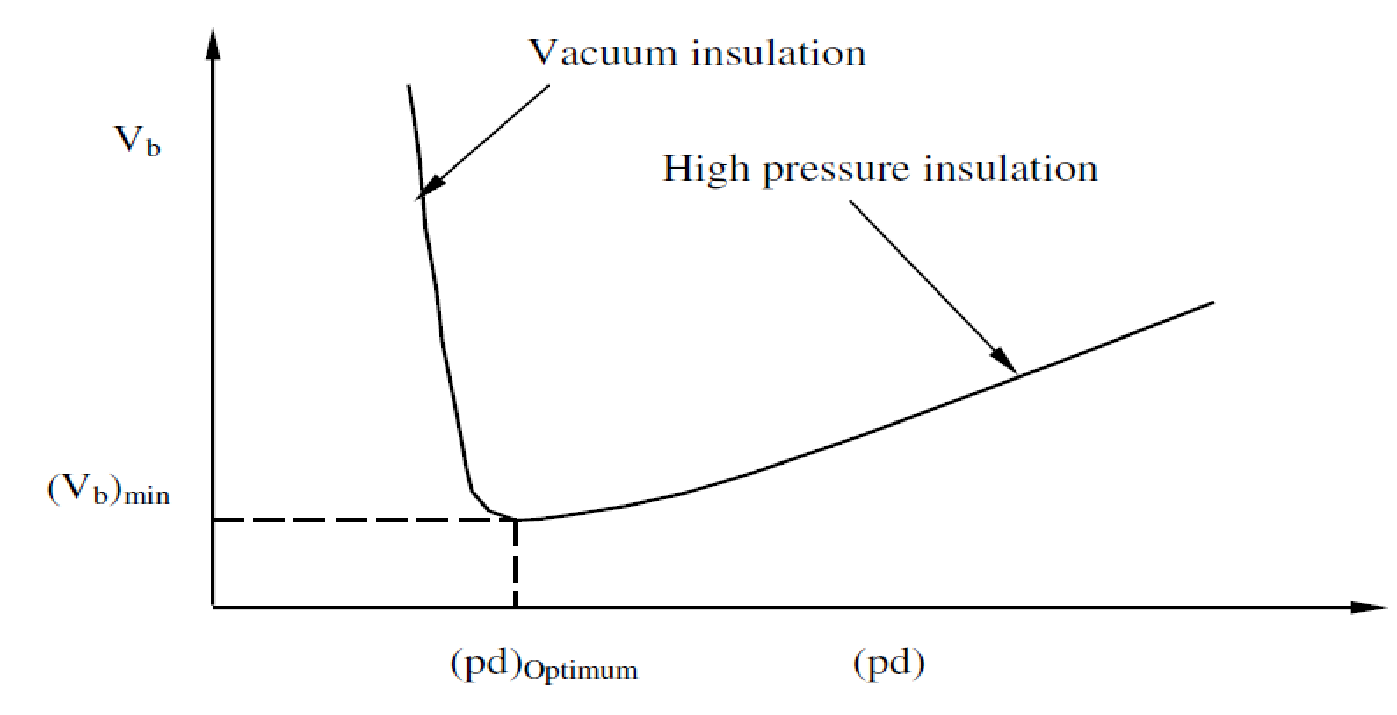
Chang, Lawless and Yamamoto, Desmaison and Leprince have shown that electrons exist as quantized particles, which have different forms of internal energy. The quantized structure consists of particles in translational excitation, rotational, and vibrational states. The kinetic forms of energy possessed by the gaseous atoms are associated with a critical temperature in the range of 10000k or 1.0 eV [Chang et al. 2].
Thermal vs Non-thermal plasma
Tendero et al. have established that the thermal and non-thermal plasma is caused by temperature changes, which influence the behavior of the gaseous atoms, molecules, and electrons by making them exist in excited states for a very short time based on the probabilistic laws of physics. The plasma has different properties and each type of plasma depends on the amount of energy supplied to the neutral species. The energy, which is supplied to the neutral species, is in the form of temperature changes or electronic density. According to Tendero et al., Thermal plasma is commonly is used in making plasma torches and microwaves.
Some of the examples of discharges include sparks, which are generated by thermal discharges and the main characteristics of thermal discharges include high-temperature changes and the unpredictable uniformity of the gaseous environment. Thermal discharges have temperatures that can be expressed mathematically as follows:
Ttrans = Trot = Tvib = Telex = Te
Chang, Lawless and Yamamoto argue that non-thermal plasma is characterized by inelastic collisions, which occur when heavy particles collide with electrons to create reactive gaseous species when non-thermal equilibrium is reached. An example of non-thermal equilibrium is the arc plasma core, which occurs in a state that can be expressed mathematically as follows:
Te=Th = 10,000 K
Non-thermal plasma is governed by the fast movement of electrons, which knock heavy static particles to create ions. The behavior of the moving electrons is governed by collisions, which are caused by the steep gradient of the plasma.
Application areas
Thermal and non-thermal discharges are applied in material processing when applying thin films on materials at low pressure. Atmospheric discharges do not require expensive and low-pressure equipment when used to apply coating on materials.
Corona Discharge (Gaseous Phase)
According to Chang, Lawless and Yamamoto corona discharge is a process, which is characterized by the flow of current from an electrode at a high potential into a gas at a low potential. When current flows from an electrode in a fluid, it ionizes the particles of the fluid in its path to form plasma around the electrode. The result is a corona discharge, which occurs in different forms depending on the geometrical configuration of the electrode and the polarity of the field being investigated (asymmetric electrode pair) [Chang, Lawless and Yamamoto 3]). The following elements define the sequential process through which a corona discharge occurs. They include asymmetric electrode configuration, high voltage current for creating free electric charges, space charges, which allow an avalanche of electrons to build up, new charge carriers for the photons in the avalanche outside the free space area, and a new avalanche effect around the cathode [Chang, Lawless and Yamamoto.
The gaseous corona discharge is made possible at low temperatures and is classified as a non-LTE (Local thermodynamic (or thermal) equilibrium plasma discharge. The discharge can either be positive or negative corona depending on the applied voltage at the end of the cathode wire. Typically, when power is applied at the end of the wire, a discharge occurs, which creates a lightning crown around the wire causing a phenomenon known as the gaseous corona. Corona discharges occur on sharp points, thin wires, and edges where the electric field has enough potential to cause the discharge. Corona discharge is defined as “a weak luminous discharge that usually takes place at or near atmospheric pressure” [Chang, Lawless and Yamamoto 1]. It is a non-uniform spatial ionizable electric field of the gas, which is found near the pin-shaped electrode, which consists of a dark non-visible weak electric field discharge gap when viewed from the outside region as shown below.
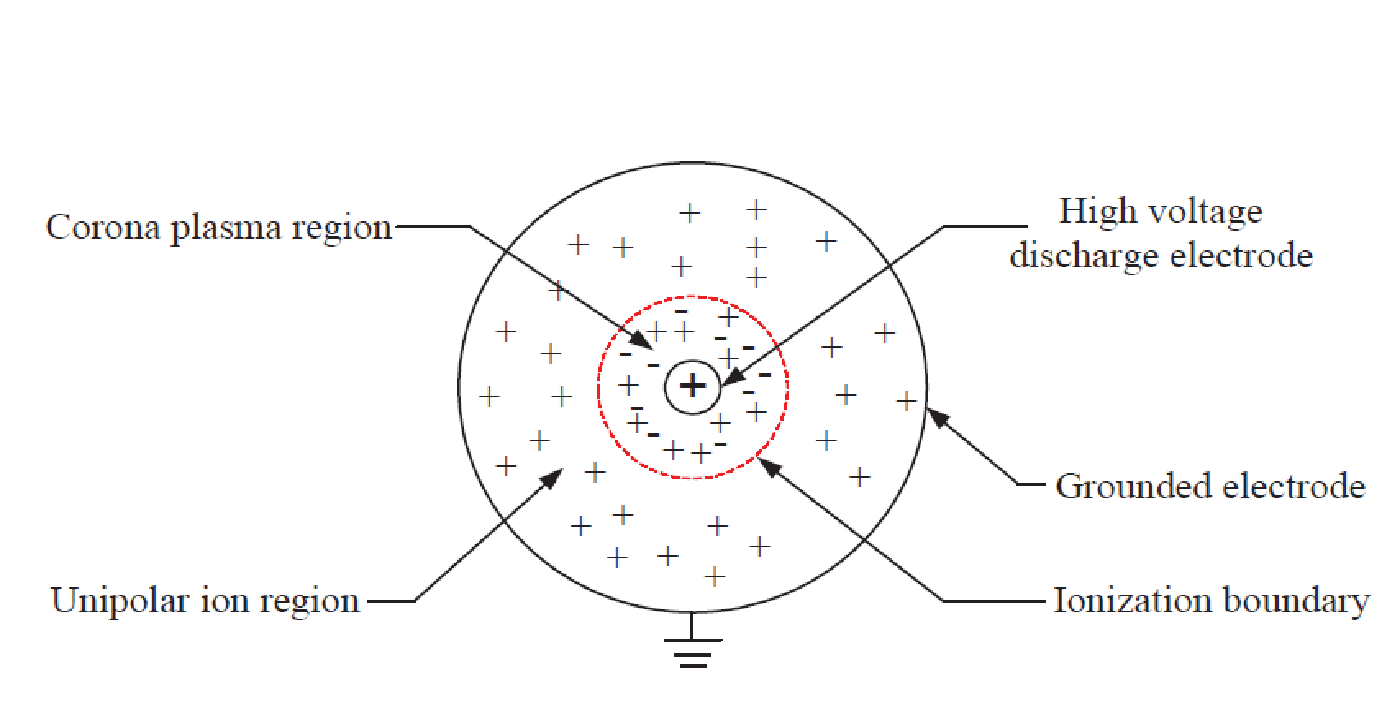
The mechanism for generating electrons for negative corona is shown below.
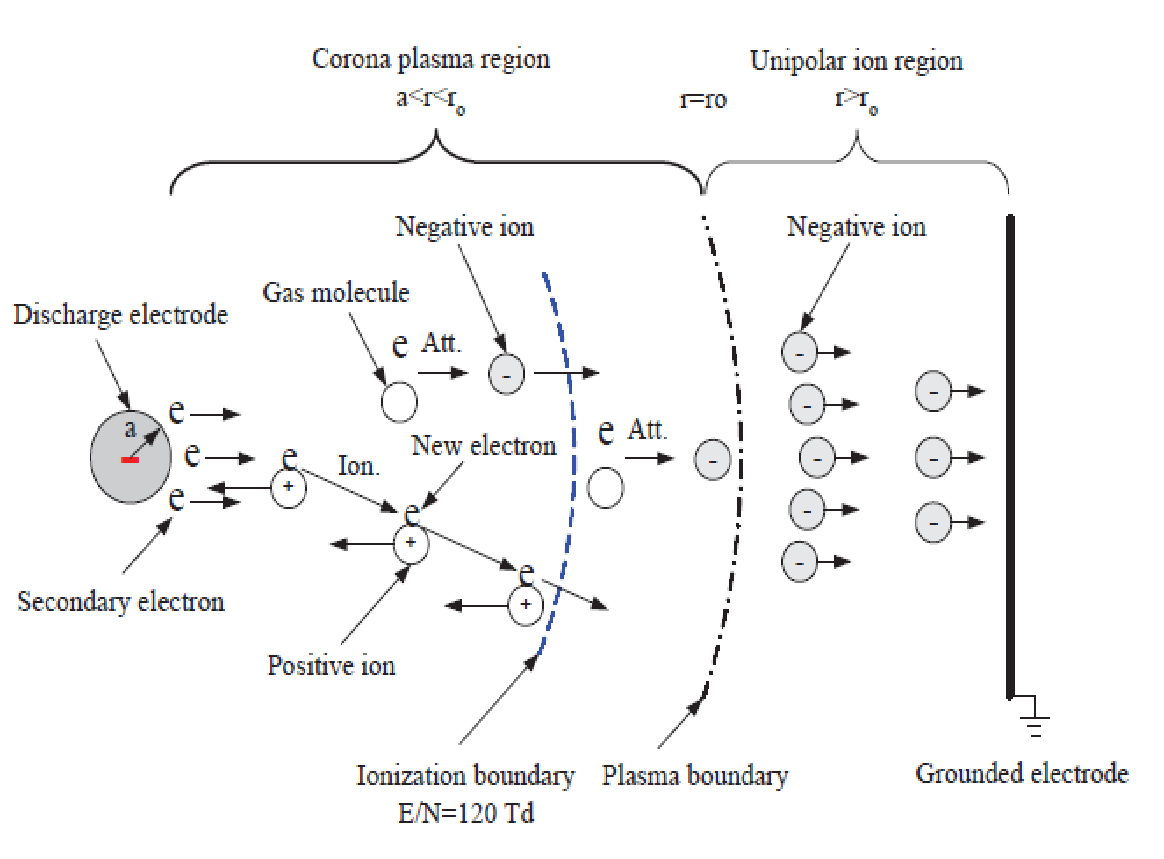
According to Chang, Lawless and Yamamoto, corona plasma is found in a small area of the electrode spacing (known as the corona plasma region) and has a weak ability to sustain ionization at the outer boundary of the corona system. During the ionization process, pulses occur which cause discharges to occur for a very short time. The short duration cannot allow the discharge to be conducted by the gaseous particles to make a transition to a spark. At the beginning of the discharge, the capacity to ionize the gas depends on the area or surface condition of the gas, the field strength of the gas, the mean free path of the electrons, and the conditions of the high voltage electrode. The graph below shows the relationship between the voltage and the current and the region, which describe the onset of the corona, the stable corona region, and the spark over-point environment.
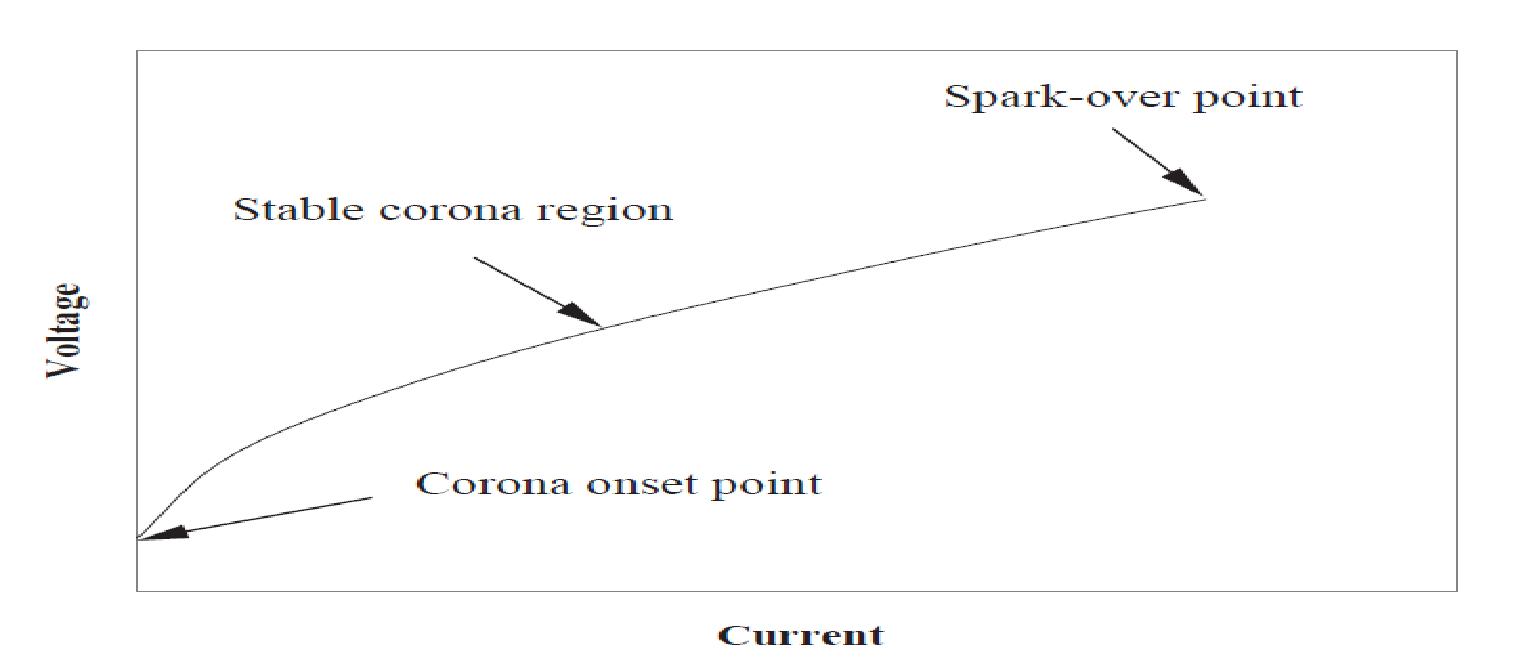
When the current is increased in the positive direction, an initial point at which corona discharge begins is reached, and as the voltage is increased with the current, a region known as stable corona is reached. Successive increases in the voltage and current enable the system to reach a point known as spark over-point, which is the point, at which discharge occurs. In a dry gas, a semi-empirical expression, which shows the relationship between corona discharge and electric field, is shown below.

Chang, Lawless and Yamamoto show that the “radius of the wire in the above expression is in meters, ε represents the electrode’s rough and dimensionless surface condition” 2[2]. The relative density of the air is represented by δ.
The relative density can be obtained using the following formula:
δ= ToP/TPo.
The relative temperature of the gas is represented by To and the relative pressure of the gas is Po. The principle of operation of the corona discharge is shown in the diagram below.
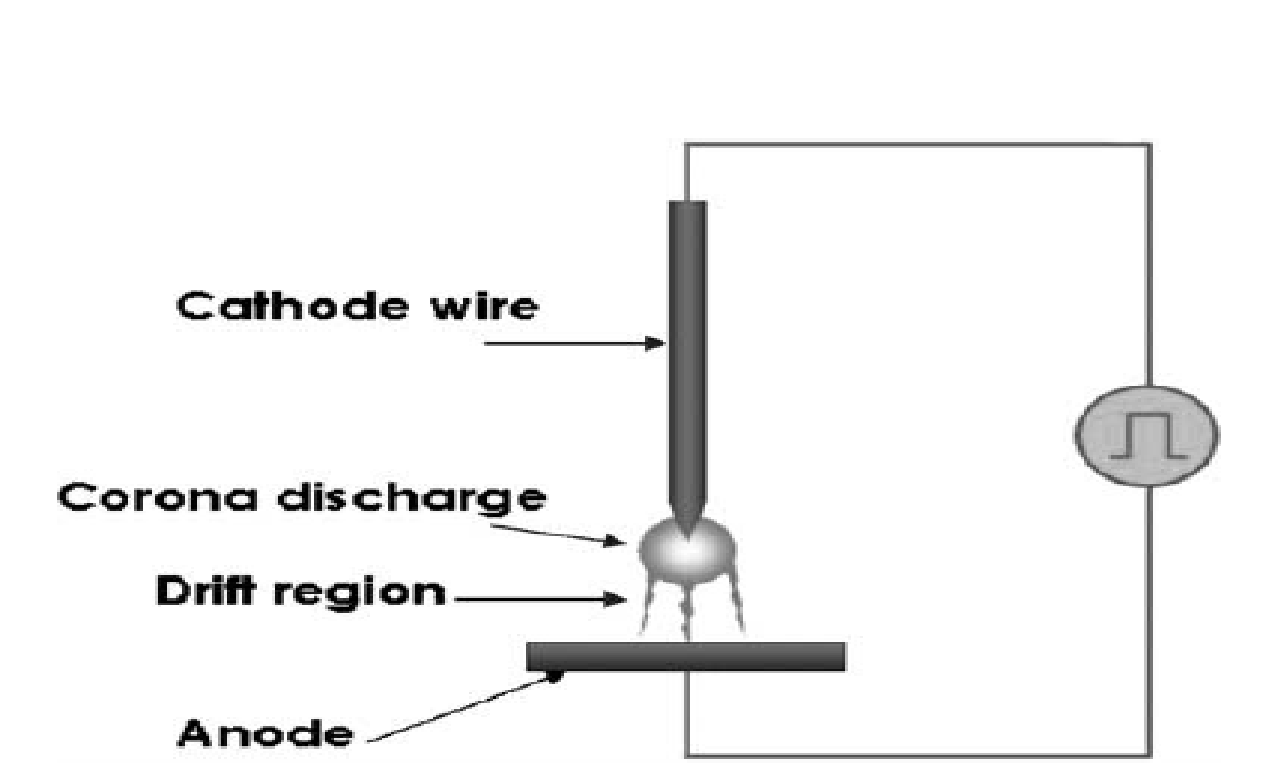
Plasma discharge can be enhanced by replacing the cathode wire with the planar electrode.
Positive and negative corona
According to Chang, Lawless and Yamamoto, negative corona (Trichel pulse mode) is characterized by the generation and discharge of particles, which move out in a radial manner after they have been knocked off by the space charges, which accumulate at the edge of the electrodes and give rise to a discharge known as the negative corona. The high field potential discharge determines the type of corona produced. Negative corona exists in electronegative gases only and positive corona is responsible for producing secondary electrons to sustain the ionization process [Chang, Lawless and Yamamoto 4]). The applied current and voltage determine the intensity of the discharges or pulses produced. In a practical situation, discharges can occur in a needle-to-plane environment, where the needle is made to be at a negative potential relative to the plane of choice where the phenomena occur.
Experimental evidence shows that the pulses remain irregular and random near the end of the point where the discharge occurs during the phenomena. The frequency of the discharges depends on the applied voltage, which when increased has an opposite effect on the amplitude of the current. Increasing the voltage energizes the electrons to create an avalanche effect [Chang, Lawless and Yamamoto 4]. If a graph of time-averaged current is plotted against the irregular voltage pulses, a region where Trichel occurs is seen. A Trichel pulse occurs at an atmospheric pressure, which is less than a few nanoseconds. Trichel pulses are caused by the occurrence of pulses, which are caused by one or more electrons in the high field region moving very fast as they ionize the gas in the region where they have migrated to. Positive ions are formed, which increase rapidly with the distance moved by the electrons as they accumulate with time.
In positive corona, the region of high potential gradient leads to the formation of the positive corona. The positive ions around the electrodes are repelled and move away while the electrons, which are created when collisions occur, move towards the positive electrode causing an avalanche of secondary electrons. The electrons are directly caused by the photons of light, which are found at the boundary of the regions that have been ionized. The process involves the photons striking the neutral gas molecules, which are then used to strike and create more electrons to sustain the avalanche effect. The most common methods used to study the phenomena of positive corona are wire-in-cylinder and point-to-point geometry.
The most suitable method for the treatment of the gas is the use of the wire-in cylinder geometry and has been proved to be the most effective when applied to plasma-chemical gaseous processes. Positive corona is developed by creating a configured asymmetric electrode, applying a high voltage at the appropriate point, ensuring that free electric charges are present, and creating a space charge area using an avalanche effect in the presence of photons. The photons are left as a result of new carrier charges and the presence of a new avalanche effect at the cathode. An electron must be present to trigger the first discharge of ions, which can be generated by cosmic radiation at a rate of 1-el/mm3/s to create a field of negative ions. Once the first electron has been generated, successive electrons are generated by triggering a series of events, where electrons knock gaseous molecules and atoms to generate more charged particles [Chang, Lawless and Yamamoto 4].
A comparative analysis of the positive and negative corona shows that positive corona produces more stable discharges, which have a linear sensitivity to alternations of humidity, and produces fewer ozone gases than negative corona. On the other hand, negative corona produces more self-sustaining discharges, which are not affected by humidity. It has been established that “negative corona contains electronegative molecules and can only be sustained in fluids” [Chang, Lawless and Yamamoto 5].
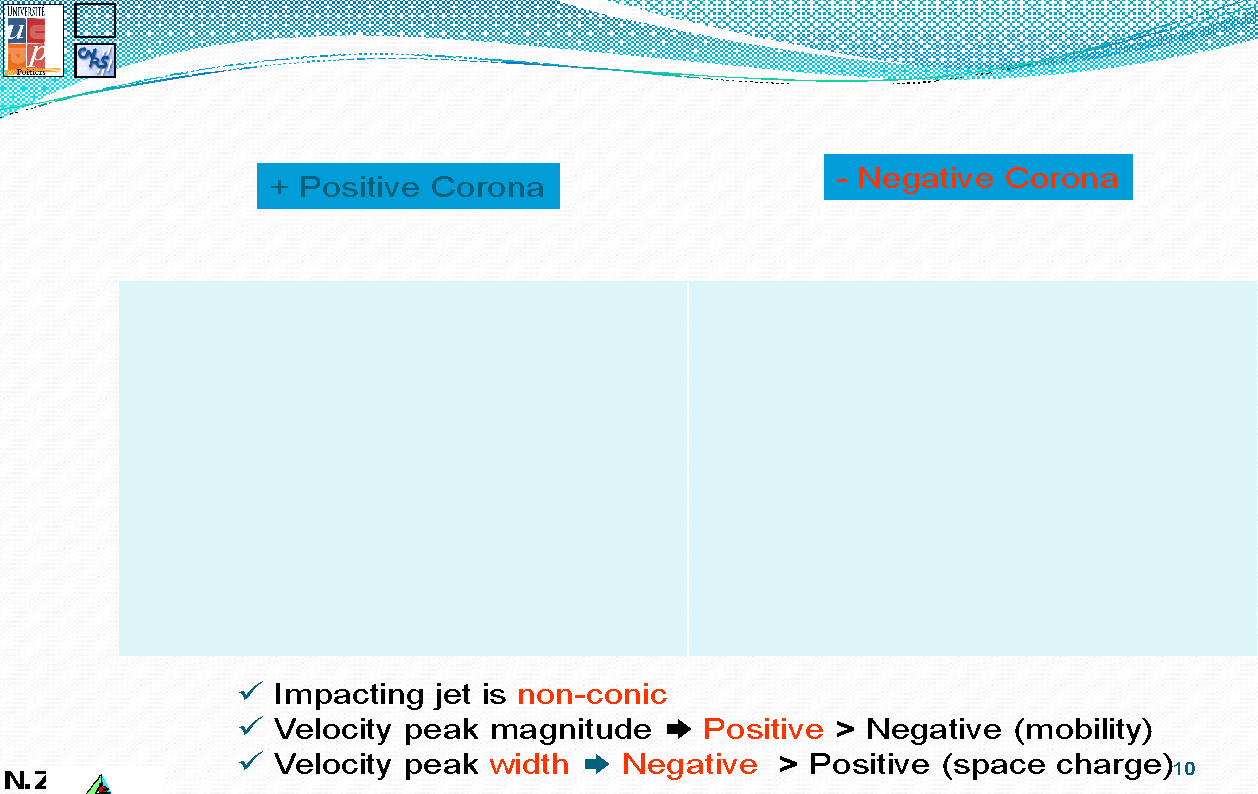
Application areas
Impulse coronas have been shown to weaken the effects of lightning along transmission lines and can be applied to make electrostatic precipitators and high-speed printing devices.
Breakdown of Gases
According to Chang, Lawless and Yamamoto, the breakdown of a gas is defined as “the process of forming ions in the discharge gap, which are caused by an avalanche multiplication of electrons “. It implies that electrons, which are excited/accelerated by the applied electric field gain sufficient energy to ionize neutral atoms or molecules to form new free electrons as part of the ionization process. The breakdown process is a prerequisite to the formation of all types of plasma discussed above. In addition to that, a breakdown voltage must exist between the electrodes, which depends on the value of the field strength between the two electrodes. The field strength is the factor, which determines the occurrence of the glow discharge. In a practical situation, a breakdown can occur when 30 kV/cm of current is applied across the two electrodes. Different gases have different breakdown values. It has been established that the breakdown current for Kapton is 1000 times the dielectric strength of air.
Breakdown mechanism
The breakdown mechanism in the gaseous phase shows that the flow of electrons between the two electrodes can cause a partial or complete breakdown of the gases. The breakdown does not damage the gas completely as can happen in other instances where the breakdown damages existing insulation (Chang, Lawless and Yamamoto 9). For a breakdown to occur, an electrode gap has to be present. If there is no potential applied across the electrodes, there has to be background ionization, which is mostly caused by cosmic rays or radiation. Measurements show that close to the earth, there are close to 1000 ion-electron pairs per cubic centimeter of gas. It is possible for a small amount of current to flow between the electrode gaps consisting of air if a very high voltage current is applied across the narrow electrode gap [Chang, Lawless and Yamamoto 5]. The flow of electrons occurs because of the drift of the positive ions, which is caused by the movement of ions towards the positive electrode. The ions move away from the other electrode to achieve a peak value where further voltage increases do not cause any further flow of current in the gas. The flow of current is sustained by an ionizing mechanism that is external to the system being used [Chang, Lawless and Yamamoto 5]. The underpinning reason for the observed characteristics includes the optimum saturation levels of air, which is equivalent to 10-15A when it is achieved. The voltage gaseous relationship is shown below.
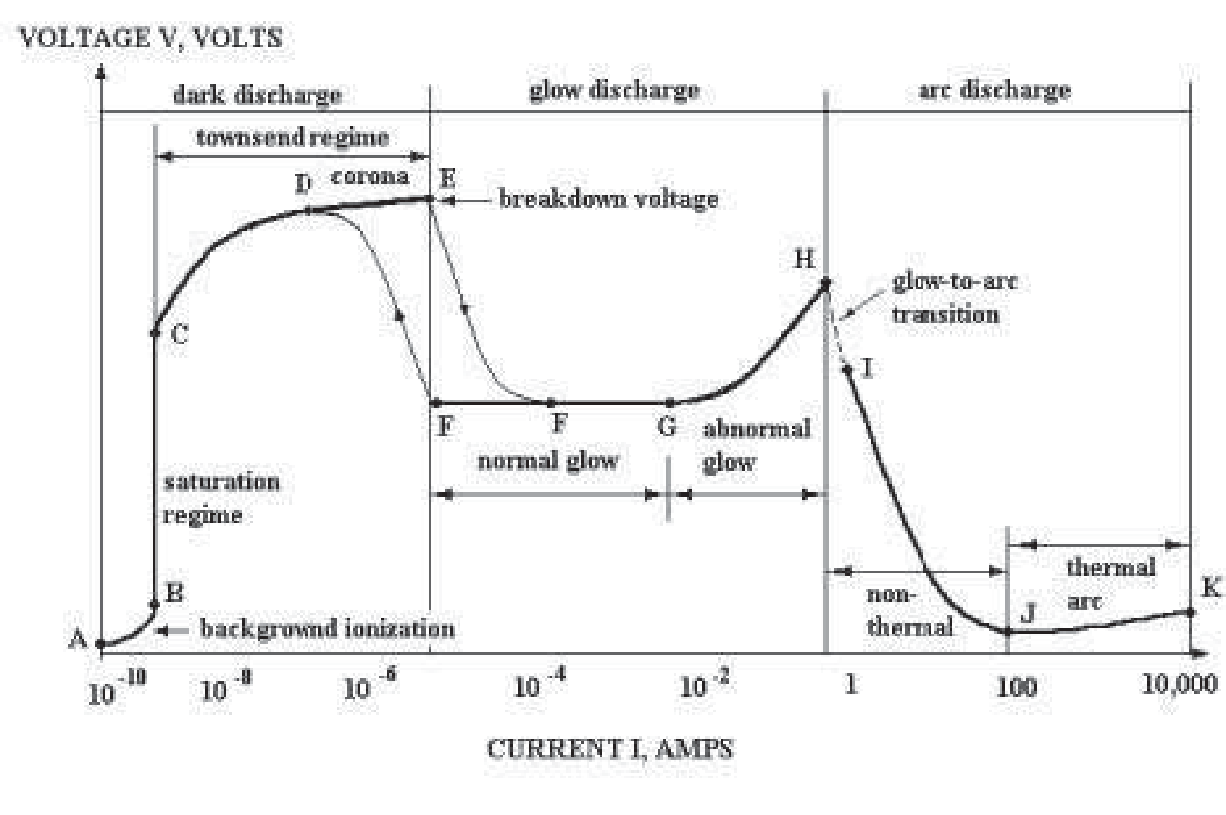
When current is increased above the saturation level, increasing the current causes a corona discharge. The discharges can either be the glow discharge or the corona discharge and depends on the voltage and the breakdown phase, which has been reached. The behavior is undesirable especially for power transmission lines because it causes loss of power [Chang, Lawless and Yamamoto 6]. Evidence shows that there is a corona region, which allows for a breakdown to occur because of further increases in voltage. When the discharge occurs, evidence of a drastic drop in the potential difference is seen, which leads to a drastic increase in the current flowing between the electrodes. As shown in the diagram above, the first section consists of dark discharge, where a saturation regime exists [Chang, Lawless and Yamamoto 6]. The current does not increase exponentially in the above case.
A breakdown can occur in uniform or non-uniform fields. In a non-uniform field, the ionization coefficient varies across the gaps in the rod-plane, point-plane, and sphere-plane. Mathematically, the non-uniform field is defined as ke= Emax/Eav, where the maximum electric field strength is represented by Emax and /Eav (Chang, Lawless and Yamamoto 9). When the values are such that Ke>4, then the field is strongly non-uniform and when the values are in the same range, the field is slightly non-uniform. In quasi-uniform field gaps and uniform fields, the ionization which leads to complete breakdown of the gas can be measured, while in the non-uniform fields, the partial breakdown is usually the case that is witnessed [Chang, Lawless and Yamamoto 6].
The following diagram shows the divergent field, which is found in a point-plane gap.
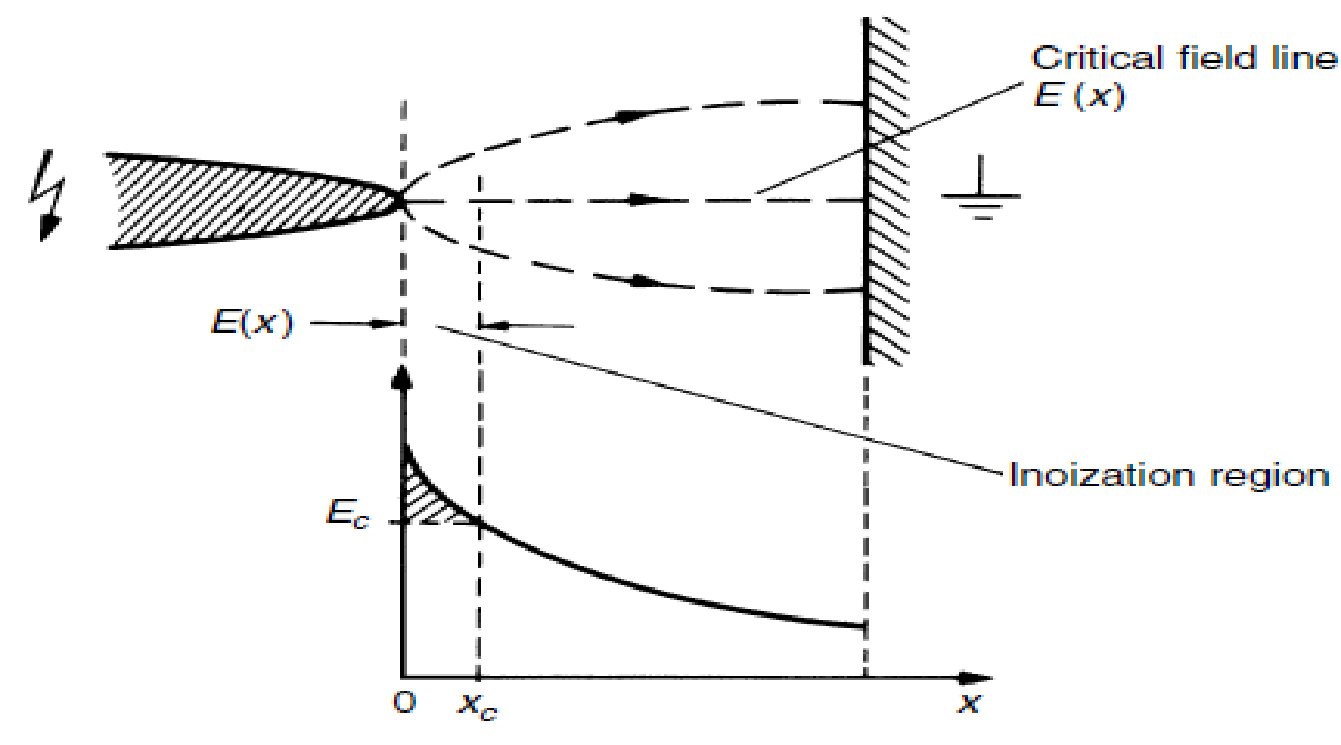

The length of the gap is shown as d in the formula above.
The breakdown mechanism can be applied to break hydrocarbons radicals based on the high-frequency fast ionization wave technique. Research results on the use of corona have shown that lower radiation losses are a distinctive advantage of the corona over the use of arc combustion on diesel and other combustible hydrocarbons to ignite the for combustion purposes [Chang, Lawless and Yamamoto 6]. The application of strong electric fields creates non-thermal plasma, which makes active particles exist in the environment. Typically, the free radicals include OH, H, O, 1O2, HO2, O2, H2O2, O3, species, which depend on the existing environment and the resulting substances, which are caused by electronic reactions in that environment. Here, the hydrolysis of methane serves as an example. Once the plasma has been applied to methane, inelastic collisions of the excited molecules occur, which make the moving electrons decompose the gaseous molecules into free radicals [Chang, Lawless and Yamamoto 6]. The next step is to form neutralized gaseous ions, leading to the ion-molecule reactions to create large ions and neural radicals, which form the basis for further studies.
Work Cited
Chang, Je-Shih, Phil A. Lawless and Toshiaki Yamamoto. “Corona Discharge Processes.” Ieee Transactions on Plasma Science, 19.6 (1991): 37-56. Print.
Tendero, Claire, Christelle Tixier, Pascal Tristant, Jean Desmaison and Philippe Leprince, “Atmospheric pressure plasmas: A review.” Spectrochimica Acta Part B 61.1(2006): 2-30. Print.